Medicinal properties of the agave plant: how to use a natural medicine
Modern folk and oriental medicine have long recognized the healing properties of agave. Although the culture has not yet revealed all its secrets, homeopaths have developed many ways to use it for health purposes.
Content:
- Agave: what is this plant?
- Useful properties of succulent
- Chemical composition of agave
- In what form is the plant used
- Agave recipes
Agave: what is this plant?
The culture belongs to the Agavov family. The genus has more than 300 representatives. Succulent grows in the United States (South and West), South America. This rather exotic plant is found on the Black Sea coast of the Crimean peninsula. The Indians, who cultivated it for centuries, were the first to learn about the healing properties of agave.
Since the 17th century, culture has been talked about in Europe: it was brought by Spanish and Portuguese sailors.
The plant "borrowed" its name from the mythical Agave - the daughter of one of the ancient rulers. This Greek name means "noble", "wonderful". A plant awarded with such epithets is simply obliged to be useful.
Description of the plant:
- The culture is a powerful perennial rosette succulent.
- The upper part of the thick, fleshy leaves bends in an arc. At their end there is a rather long thorn (up to 3 cm).
- An adult member of the genus may have about 30 gray-green, waxy bloom leaves. Each of them lives from 10 to 15 years.
Agave develops rapidly in its homeland. Here, the leaves easily grow 3 m in length. An adult 8-10-year-old plant throws out a tall (12 m) stem, decorated with a huge inflorescence of 4000 flowers. Dwarf species are also known, a small rosette of which does not exceed 4 cm.
Most agaves bloom once in a lifetime.
The price to pay for this luxury is slow fading over the course of several months. The lower part of the plant gives life to new shoots. Among all types of plants, the most popular in indoor floriculture is American agave. Like all members of the genus, it is a very undemanding perennial. Succulent is one of the most light-loving crops. He is not afraid of direct sunlight, which is dangerous for other colors. Agave is an American ornamental plant.
Useful properties of succulent
From a pharmacological and chemical point of view, not everything is known about agave. Despite this, traditional medicine has long used it as a proven medicine. Culture-based formulations promote:
- Soothe pain
- Reducing fever
- Disinfection
- Coughing up mucus
- Removal of inflammation
- Improving metabolic processes
- Removing excess fluid from the body
- Healing wounds
- Normalization of the digestive system
Agave can be used as a natural and effective contraceptive. Traditional healers consider the plant to be an effective medicine for:
- Furunculosis
- Radiculitis
- Rheumatism
- Do not lie
- Dyspepsia
Agave is not only a medicine, but also a culinary ingredient. Edible flowers are added to salads. Luscious foliage is a storehouse of nutrients. You can eat it. The stalks of the succulent are fried. An alcoholic drink (tequila) is made from blue agave.For its production, you only need something similar to pine cone rhizome. From 7 kg of raw materials, 1 liter of alcohol is obtained.
The sap of the plant also goes into business. Sugar, honey and wine are made from it. Agave sweetener does not cause blood sugar fluctuations. It can be added to baked goods: the syrup will not change the usual taste and texture of the dish in any way. This substitute is almost twice as sweet as traditional sugar. It is not very thick, which allows you to carefully, drop by drop, introduce it into the dough.
In tropical areas, agave is specially grown for its fiber.
It serves as a raw material for the production of ropes, cords, twines, packaging and coarse fabrics. Waste also does not go to waste: wrapping paper is made from it. Agave is simply a versatile plant that is widely used in medicine, cooking and industry.
Chemical composition of agave
The therapeutic effect of the use of culture is manifested due to the beneficial substances that are included in its composition. The plant has a high concentration of saponins and sucrose fructosylation products.
The former are contained in the rhizome. They have a pronounced anti-inflammatory effect, activate the protective functions of the body. That is why agave is capable of killing germs. The antibacterial properties of the plant were already known to the Aztecs, who used it for the speedy healing of wounds.
Inulin, which is a fructan, is beneficial for overweight people. Without altering your blood sugar levels, it will make you feel full and reduce your appetite.
This polysaccharide lowers the level of cholesterol in the body, reduces the risk of cancer, promotes the absorption of calcium, magnesium, isoflavones by the body. According to research, the substance improves calcium absorption by 20%: bone density increases by 15%. This is true for older people, because their bones are especially fragile. Eating agave will bring them real benefits.
Perennial contains anordrin and dynordrin - substances that inhibit the fertility of the female body.
They are isolated in China for the preparation of natural contraceptives, which are sufficient to take several times a month. The healing properties of agave are explained by the high concentration of nutrients in its composition.
In what form is the plant used
Traditional medicine recommends using old leaves (3 years old) and freshly squeezed succulent juice for treatment. The culture is applied externally and internally. Powders, decoctions, infusions are prepared from agave. It also helps in its raw form.
Agave Treatment Secrets:
- A fresh leaf of agave will help get rid of an abscess, a boil, inflammation of the sciatic nerve. It is applied to the problem area with a cut. Top - cotton wool or warm bandage. At the same time, one must not forget about caution, otherwise one cannot do without burns.
- Sciatica therapy in patients with sensitive skin can be accompanied by intense fever and pain. Then the irritation will have to be treated.
- The powder is effective for jaundice. To get it, the leaf is dismembered and air-dried. Then the raw material is ground into powder and sieved. A single dose of such a drug is 0.2-0.5 g. It is diluted in 0.5 liters of boiled water. They drink 3 times a day.
- To alleviate the condition with radiculitis, the leaves of the plant are rubbed on a fine grater. The resulting substance is rubbed overnight. The problem area is tied with something warm and covered with a blanket.
- Skin irritation is a normal reaction with this treatment. The substance, filtered through 2 layers of gauze, does not injure the tissues so much. If the burning sensation is rather strong, an aqueous solution of plant juice (1: 1) is used. 200-300 g of leaves is enough to prepare the medicine for 1-2 times. The remaining crushed agave is poured with alcohol: this way it will not deteriorate until the next session.
The use of agave for treatment is diverse and depends on the disease: decoctions are prepared from it, infusions, powders and ointments.
Agave recipes
Infusion applied externally. Fold the shredded sheet into a jar. Do not squeeze. Pour vodka a few centimeters above the level of the substance.Leave the container in a dark place. After 7-10 days, the mixture is filtered. The finished medicine is used for compresses and rubbing. The procedure is performed 2 times a day.
Infusion applied internally:
- You will need 0.5 liters of vodka, 50 g of crushed agave leaves. Everything is mixed and infused in the dark for 7 days at room temperature. The filtered tincture is consumed in 10-20 drops (after meals), adding 50 ml of water. For 30 days, they are treated 2-3 times a day. After 2-3 weeks, the course is repeated.
- Take a medium-sized sheet. Grind. Insist in cold water for 6 hours. Strain using cheesecloth. Consume 1 tablespoon 3 times daily before consuming food. This medicine normalizes the liver.
Infusion for rubbing with rheumatism:
- Shred the freshly cut leaves of the plant.
- Place in 40-70% alcohol or vodka (1:10).
- The composition is kept for 7-8 days in a tightly closed container at room temperature.
- The filtered liquid is stored in a dark bottle.
Infusion with wormwood to normalize the stomach:
- You will need chopped agave and wormwood foliage (5: 1), 250 ml of water.
- Pour boiling water over 100 g of herbs. Leave to cool.
- After straining, drink 1 tablespoon 3 times a day before meals.
Agave for bronchial asthma:
- Mix the plant and honey in equal amounts.
- Consume 1 tablespoon no earlier than 1 hour before meals.
- Treat 4 times a day.
Traditional healers have developed such technologies for preparing medicines from agave, in which the plant reaches its maximum potential.
Agave - perennial, which makes it possible to improve your condition at home. The main thing is to use natural medicine correctly and not to harm yourself.
More information can be found in the video.



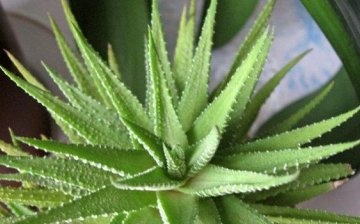
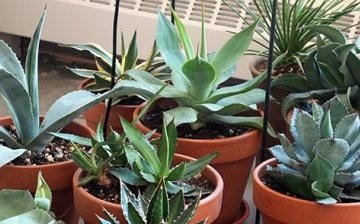
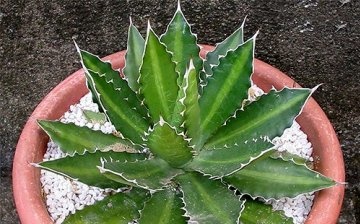
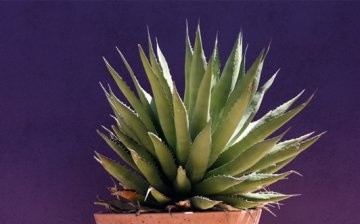
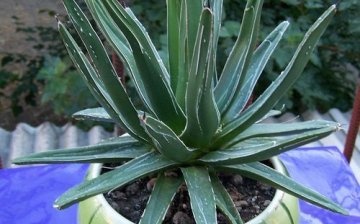
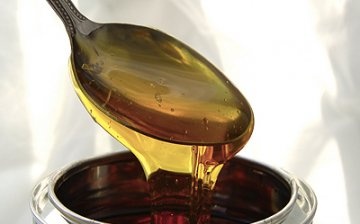







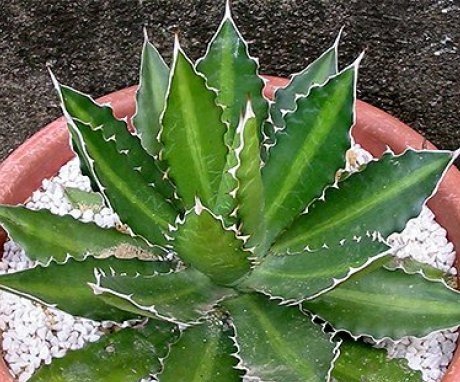
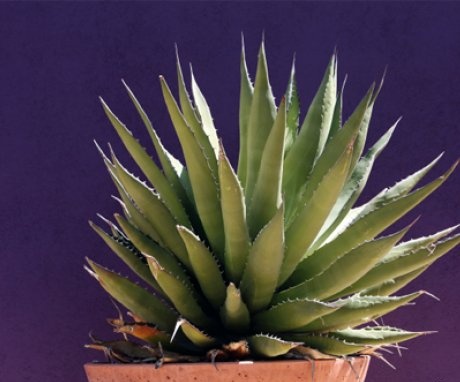
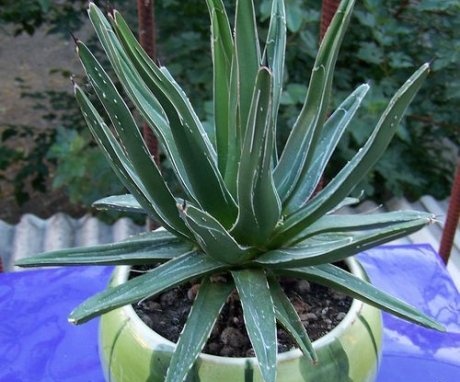
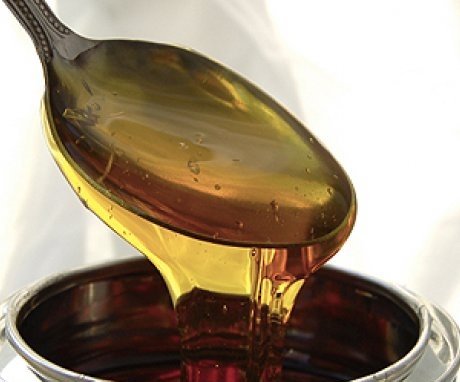
Recently I planted a small agave shoot, which quickly took root and gave good growth. But I had doubts about the healing properties of this plant, but it turns out to be no less valuable than the usual agave.